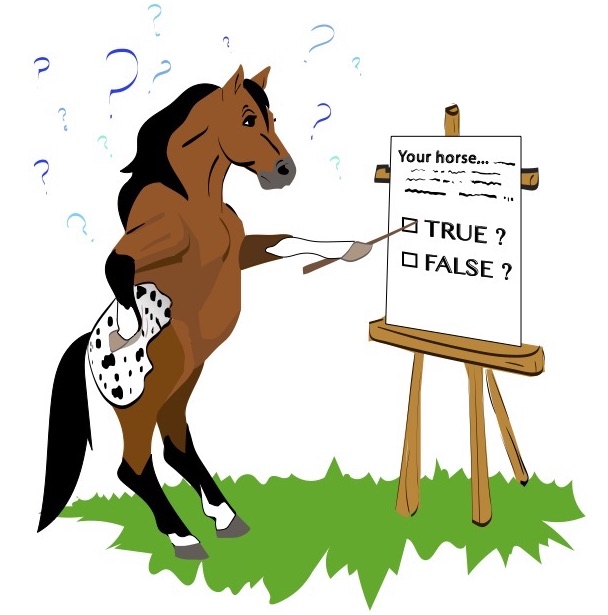
1. Using your reins assertively and your legs aggressively…
A) encourages your horse to be responsive.
B) is necessary for full control of your horse.
C) both of the above.
D) neither of the above.
2. The best riders use their seat bones in concert with their weight and other aids to finesse…
A) turns and lateral movements.
B) lope departs and lead changes.
C) all of the above.
D) none of the above.
3. True or false: When you pick up the reins, your horse should soften through his poll, dropping his nose down close to his chest.
T / F
4. Using your body to “lead” your horse through a turn results in…
A) confusion for him.
B) imbalance for you.
C) lighter rein contact.
Book:
Reining Essentials: How to Excel in Western’s Hottest Sport
HOW’D YOU DO? (Answers below.)
1. D is correct. Aggressive cueing is like “yelling” at your horse. Eventually he becomes oblivious to it and you have to yell even louder. That’s why you should always ask softly first, with both your rein and leg cues.
[READ: How to develop feel in your hands to ride better.]
2. C is correct. Seat bones can influence all these maneuvers. That’s why it’s so important to sit up straight in the saddle, without perching forward or slouching back. Either position flaw will compromise your seat bone contact in addition to causing other rider errors.
[READ: More on developing seat-bone power.]
3. F is correct. You don’t want him overflexed. Viewed from the side, your horse is properly flexed through the poll if his face is at or slightly in front of the vertical. If his nose is drawn in towards his chest, he’s bending in the middle of his neck instead of correctly at the poll.
[READ: More ride-better tips from veteran coach Don Murphy.]
4. C is correct. Subtle positioning of your body to help cue a turn enables you to use lighter rein contact. Look where you want to go, gradually turn your upper body in that direction, and slightly weight your inside stirrup.
[READ: Do you know your “rider biomechanics”?]
Don’t miss out! If you’re not already receiving H&R’s fun and informative weekly newsletter, sign up now for The Ride. It’s *free*!
ALSO *FREE*: The terrific e-magazines Horse&Rider Monthly and Trail Rider Monthly. Sign up now!






